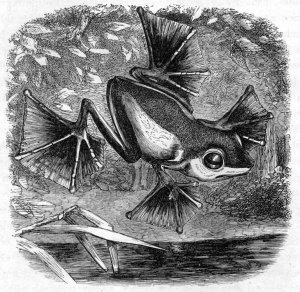
 | |
The CleaveRule class provides a model for specifying aqueous cleavage rules for refining cleavage specifications (CleaveSpec) of Polymer Sequences. More...
| Header: | #include <CleaveRule.hpp> |
| Inherits: | MsXpS::libXpertMass::PolChemDefEntity |
| CleaveRule(PolChemDefCstSPtr pol_chem_def_csp, QString name, QString leftCode = QString(), QString leftFormula = QString(), QString rightCode = QString(), QString rightFormula = QString()) | |
| CleaveRule(const CleaveRule &other) | |
| virtual | ~CleaveRule() |
| QString * | formatXmlClrElement(int offset, const QString &indent = QString(" ")) |
| const QString & | leftCode() |
| const Formula & | leftFormula() |
| bool | renderXmlClrElement(const QDomElement &element, int version) |
| const QString & | rightCode() |
| const Formula & | rightFormula() |
| void | setLeftCode(const QString &code) |
| void | setLeftFormula(const Formula &formula) |
| void | setRightCode(const QString &code) |
| void | setRightFormula(const Formula &formula) |
| bool | validate() |
| CleaveRule & | operator=(const CleaveRule &other) |
| int | isNameInList(const QString &name, const QList<CleaveRule *> &cleave_rule_list, CleaveRule *other = nullptr) |
| QString | m_leftCode |
| Formula | m_leftFormula |
| QString | m_rightCode |
| Formula | m_rightFormula |
Cleavage rules help refine the description of the chemical reaction that is the basis of a cleavage (either enzymatic or chemical).
While a number of cleavage agents (like a number of enzymes) do not make unexpected reactions upon the cleavage (enzymes usually hydrolyze their substrates), there are chemical agents that while cleaving their polymer sequence substrate chemically modify the ends of the generated oligomers. One notorious example is the case of cyanogen bromide, that cleaves proteins right of methionyl residues. Upon such cleavage, the monomer at the right side of the generated oligomer (methionyl residue) gets modified according to this actionformula: "-CH2S+O". This reaction is modelled using a CleaveRule.
See also CleaveMotif and CleaveSpec.
Constructs a CleaveRule instance
Constructs a CleaveRule instance as a copy of other.
[virtual noexcept] CleaveRule::~CleaveRule()Destructs this CleaveRule instance
Formats a string representing this CleaveRule instance suitable to use as an XML element.
The typical cleavage rule element that is generated in this function looks like this:
<clr> <re-mnm-code>M</re-mnm-code> <re-formula>-CH2S+O</re-formula> </clr>
The formatting of the XML element takes into account offset and indent by prepending the string with offset * indent character substring.
indent defaults to two spaces.
Returns a dynamically allocated string that needs to be freed after use.
[static] int CleaveRule::isNameInList(const QString &name, const QList<CleaveRule *> &cleave_rule_list, CleaveRule *other = nullptr)Searches for a CleaveRule instance by name in cleave_rule_list.
If the instance is found, and other is non-nullptr, it is copied to other.
Returns the index of the found CleaveRule instance in cleave_rule_list or -1 is the cleavage rule was not found.
Returns the left code.
See also setLeftCode().
Returns the left formula.
See also setLeftFormula().
Parses the CleaveRule XML element using a versioned function.
Upon parsing of the element, its data are validated and set to this CleaveRule instance, thus essentially initializing it.
Returns true if parsing and validation were successful, false otherwise.
Returns the right code.
See also setRightCode().
Returns the right formula.
See also setRightFormula().
Sets the left code.
See also leftCode().
Sets the left formula.
See also leftFormula().
Sets the right code.
See also rightCode().
Sets the right formula.
See also rightFormula().
Validates this CleaveRule instance.
Validation entails the following:
Returns true if the validation is successful, false otherwise.
Assigns to other to this CleaveRule instance.
Returns a reference to this CleaveRule instance.
This variable holds the Monomer code at the left of the cleavage site.
This variable holds the Formula to be applied onto the left monomer code.
This variable holds the Monomer code at the right of the cleavage site.
This variable holds the Formula to be applied onto the right monomer code.